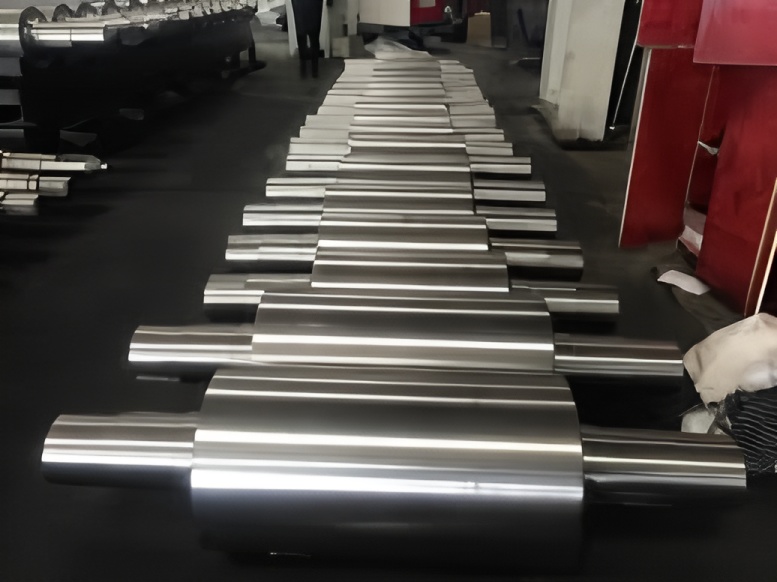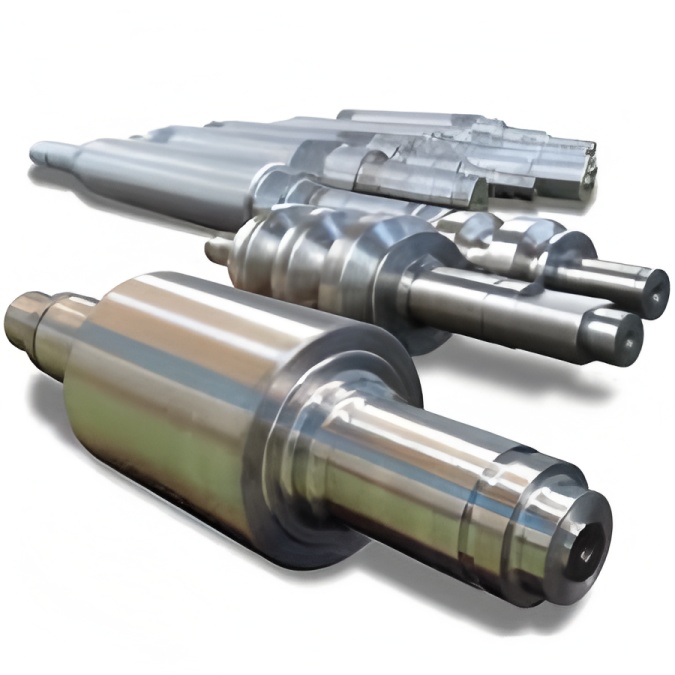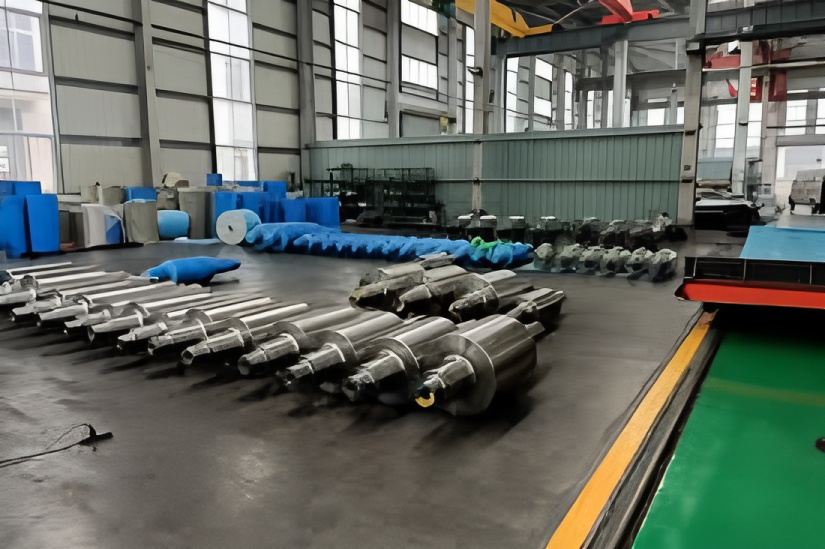Why is pre-pressing required after each roll change?
Pre-pressing serves a memory function. For example, when a 300mm diameter work roll completes pre-pressing with a 20cm roll gap, changing to a 290mm diameter roll would actually result in a 30cm gap, though the display would still show 20cm. This discrepancy makes pre-pressing essential for accurate roll gap measurement. Pre-pressing is unnecessary when roll diameters remain identical.
How to calculate rolling line elevation?
Rolling line elevation = (Maximum upper backup roll diameter – Actual upper backup roll diameter)/2 + (Maximum upper intermediate roll diameter – Actual upper intermediate roll diameter) + (Maximum upper work roll diameter – Actual upper work roll diameter) + Original value = Actual rolling line elevation value
How to calculate horizontal movement of upper and lower intermediate rolls?
(Intermediate roll length – Strip width – Intermediate roll chamfer length)/2 = Intermediate roll traverse amount
What are the main shape defects in cold rolled strip during rolling?
Primary shape defects include: unilateral wave, bilateral wave, middle wave, bilateral small edge wave, unilateral small edge wave, bilateral rib wave, and unilateral rib wave.
When do unilateral waves occur and how to control them?
Cause: Incorrect roll gap creates uneven rolling pressure, causing unilateral waves on the higher pressure side.
Solution: Adjust roll gap to correct deviation and identify gap differences.Cause: Roll misalignment or strip deviation.
Solution: Promptly adjust roll gap based on strip deviation or coil position error.
When do bilateral waves occur and how to control them?
Cause: Insufficient work roll bending force.
Solution: Increase work roll bending force.Cause: Excessive rolling pressure at head/tail sections.
Solution: Enhance bending force. If insufficient, increase tension, disable thickness monitoring, and manually adjust rolling force within bending force limits.
When do middle waves occur and how to control them?
Cause: Excessive work roll bending force.
Solution: Reduce work roll bending force.Cause: Insufficient rolling force.
Solution: Decrease bending force. If middle waves persist at zero bending force, reduce roll tension. Larger rolling force can also help control middle waves.
When do bilateral small edge waves occur and how to control them?
Cause: Work hardening during thin gauge rolling creates bilateral waves due to roll deformation into concave shape under high rolling pressure.
Solution: Increase work roll bending force and adjust process deformation parameters.Cause: Insufficient roll hardness during thin gauge rolling.
Solution: Replace work roll.
When do unilateral small edge waves occur and how to control them?
Cause: Inaccurate roll gap during thin gauge rolling (not apparent in thick gauge).
Solution: Adjust roll gap or increase unilateral bending force.Cause: Uneven roll hardness with one side too soft.
Solution: Replace work roll.



